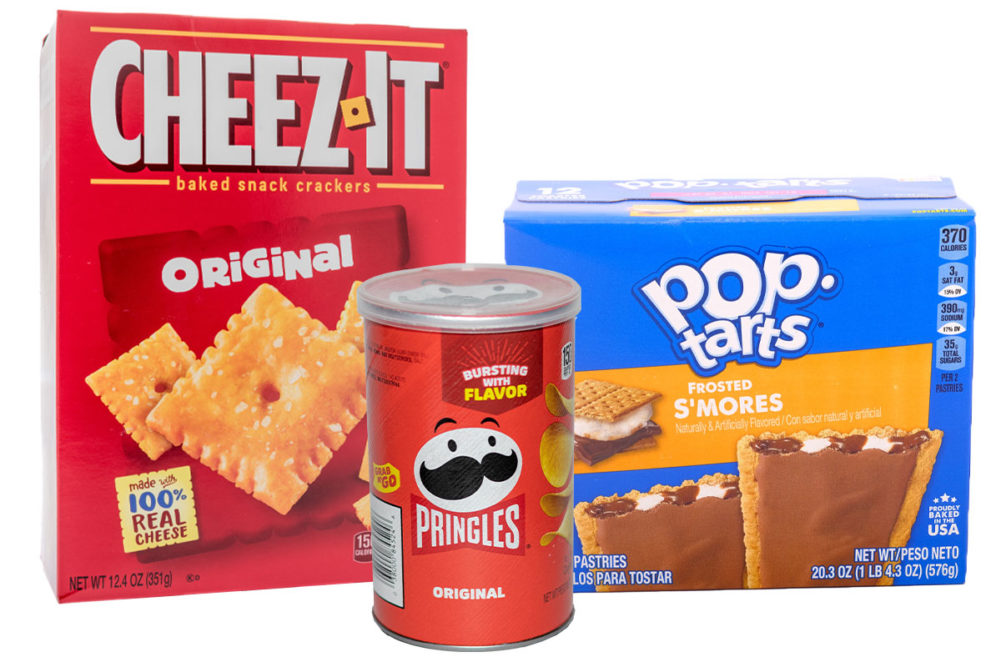NEW YORK — A core tenet of Kellanova’s growth strategy, the Kellogg Co.’s soon-to-be spun-off snacks and prepared foods business, is consumers in emerging markets will embrace such brands as Pringles, Cheez-It, Pop-Tarts and Rice Krispies with the same enthusiasm as consumers in developed markets.
Once the spinoff is complete, Kellanova will have approximately $13 billion in annual sales, employ more than 24,000 and have a manufacturing footprint that spans 20 different countries. Key product categories in its portfolio will include snacks, international cereal, frozen foods, noodles and others. Fifty percent of the new business’ sales will come from five brands, including Pringles, Cheez-It, Rice Krispies Treats, Pop-Tarts and Eggo.
“More than 80% of our sales come from snacks or emerging markets,” said Steven A. Cahillane, the current chairman, president and chief executive officer of Kellogg Co., and the future chairman and CEO of Kellanova, during Kellogg’s Aug. 9 investor day. “This means that the vast majority of our portfolio participates in categories and markets that have led and will continue to lead overall packaged food growth.
“In fact, our business outside the US and Canada account for half of our net sales. In these international markets, we benefit from long-standing presence, experienced management teams, local supply chains and very strong routes to market to go along with our powerful portfolio of brands.”
Snacks represent 60% of sales and will play a leading role in future growth, according to Mr. Cahillane.
“Pringles, obviously, is already very global,” he said. “Cheez-It is the No. 1 crackers brand in the US and has successfully launched into Canada, Brazil and most recently, Mexico. There's obvious opportunity to expand elsewhere. Pop-Tarts and Rice Krispies Treats are already in markets outside of the US, including the UK, Australia and Mexico, but they have runway for more investment in growth in those markets and many more markets.”
To illustrate the growth opportunity facing Kellanova, Mr. Cahillane illustrated the potential of Pringles around the world. Today, the brand has a 3.5% market share in the US, 4% in Canada, 6% in Spain, 12% in Germany, 1% in Mexico and 5% in Brazil, according to the company.
“… Only in (South) Korea and Saudi Arabia does Pringles have a share in the high teens,” he said. “Everywhere else, it's still in the single digits. In fact, where it took the last decade to add $1 billion of net sales, we believe and are confident we will add the next billion within five years, which would make this a $4 billion brand for us.”
He added that Pringles under-indexes in single-serve and muti-pack formats.
“So, we'll keep adding capacity for these pack formats,” Mr. Cahillane said. “We'll continue to leverage effective route-to-market capabilities to expand distribution both geographically and by channel. For instance, we have an opportunity to meaningfully increase our penetration of high-frequency stores, such as convenience stores in developed markets and mom-and-pop shops in emerging markets.”
With Cheez-It, Mr. Cahillane sees the brand’s newer Snap’d and Puff’d applications extending its reach into new markets.
“ … New platforms such as Snap'd give us that much more flexibility to find the right food and pack format for international markets,” he said. “So, while we expect to sustain Cheez-It's growth in the US, its international expansion is another leg to its growth story.”
The company plans to pace its growth of Cheez-It initially in Canada, Mexico, Brazil and, possibly, a few markets in Europe, according to the company.
“There’s no reset coming that says we’re going to launch … Cheez-It into 25 new markets in one year,” Mr. Cahillane said. “We’re going to take an approach (where) we’re going to learn from that approach and then continue to improve upon that approach.”
Three emerging markets identified as priorities for Kellanova during the presentation included Mexico, India and Brazil.
“Mexico has, through our roughly seven decades of presence there, achieved scale, and its margins are comparable or even better to our developed markets,” said Amit Banati, Kellogg’s chief financial officer. “India, where we've been for a little over three decades, is approaching that of developed markets with room to expand further.
“And in Brazil, where we've been relatively small until recent years, we still have significant room for expansion and have made good headway in the past couple of years. And there are plenty of markets like Brazil, where our infrastructure is in place and where growing our sales will cover more of that infrastructure expense.”
Management is guiding annual sales growth to be in a range of 3% to 5% per year and operating profit growth to be in a range of 5% to 7%. For fiscal 2024 the company is guiding sales to be between $13.4 billion and $13.6 billion, and operating profit to be between $1.85 billion and $1.9 billion. Helping contribute to that growth will be capital investments in new manufacturing plants in Latin America and AMEA (Asia, Middle East and Africa), additional production lines in North America and Europe, and small-pack capacity in North America.
“We have targets and plans in place to leverage what is inherently a high return on invested capital business and strive to deliver better profit margins,” Mr. Cahillane said. “We anticipate this will drive faster growth in net sales and profit, faster than Kellogg Co., faster than our peer group, and we're doing it all in a way that is sustainable and dependable.”





